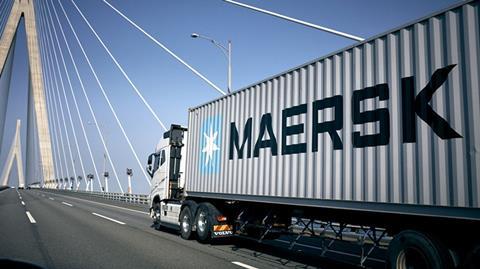A.P. Moller – Maersk’s revenue stood at USD13 billion in the second quarter of this year, compared to USD21.7 billion in the same period in 2022.

This, according to Maersk, was ahead of expectations, as the ongoing market normalisation continued leading to lower volumes and lower rates. Profitability, it added, was strong at 12.4 percent but was still significantly lower compared to the extraordinary Q2 2022.
Reflecting the strong first half performance, Maersk raises its financial outlook and now expects underlying EBITDA between USD9.5-11 billion (previously USD8-11 billion). “The Q2 result contributed to a strong first half of the year, where we responded to sharp changes in market conditions prompted by destocking and subdued growth environment following the pandemic fuelled years,” said Vincent Clerc, ceo of Maersk.
“Our decisive actions on cost containment together with our contract portfolio cushioned some of the effects of this market normalisation. Cost focus will continue to play a central role in dealing with a subdued market outlook that we expect to continue until end year. While we step this agenda further up, we are unwavering in our transformation and continue to invest in and deliver truly integrated logistics solutions to our customers and amplify their supply chain resilience for the uncertain times ahead.”
Ocean revenue fell to USD8.7 billion from USD17.4 billion, driven by a decrease in freight rates and loaded volumes. While the volume and rate environment stabilised at a lower level during Q2, the ocean segment continued to be impacted by lower demand, driven by a significant inventory correction in particular in North America and Europe, said Maersk.
Revenue in logistics and services, meanwhile, was USD3.4 billion compared to USD3.5 billion. The segment was also impacted by lower volumes due to the continued destocking and weaker consumer demand, as well as low rates.
Revenue in Maersk’s terminal activities decreased to USD950 million from USD1.1 billion and was influenced by the normalisation of storage revenue and lower volumes amid lower consumer demand and less congestion in North America.
















